
This article was last updated on April 16, 2022
Canada: ![]() Oye! Times readers Get FREE $30 to spend on Amazon, Walmart…
Oye! Times readers Get FREE $30 to spend on Amazon, Walmart…
USA: ![]() Oye! Times readers Get FREE $30 to spend on Amazon, Walmart…
Oye! Times readers Get FREE $30 to spend on Amazon, Walmart…
In its recent Financial Stability Report, the Federal Reserve looks at the resiliency of the American economy and the key financial vulnerabilities that increase the level of risk for the economy as a whole, most of which are, in some way, connected to higher interest rates. This “navel gazing” by the Fed is fascinating, particularly given that it was the central bank’s policies that led to the financial crisis and near collapse of the global economy between 2007 and 2009. While the Fed touts its success at reviving the economy since that time through the use of imaginative and untested monetary policies, it notes the following vulnerabilities that may have or already have “built over time”:
• Valuation pressures are generally elevated, with investors appearing to exhibit a high tolerance for risk-taking, particularly with respect to assets linked to business debt.
• Borrowing by households has risen roughly in line with household incomes . However, debt owed by businesses relative to gross domestic product (GDP) is historically high, and there are signs of deteriorating credit standards .
• The nation’s largest banks are strongly capitalized, and leverage of broker-dealers is substantially below pre-crisis levels. Insurance companies have also strengthened their financial position since the crisis.
• Funding risks in the financial system are low relative to the period leading up to the crisis . Banks hold more liquid assets, and money market mutual funds are less vulnerable to destabilizing runs by investors
In this posting, I will focus on the issue of business debt since it is my personal belief that this is the Achilles heel of the American economy.
According to data provided by the Fed, this is what has happened to corporate bond yields for both BBB rated and high-yield (i.e. junk debt) since the mid-1990s:
As you can see, corporate bond yields have been at historical lows since the Great Recession and have only begun to move up during the last half of 2018 as the Fed has pushed interest rates higher.
What is even more concerning is the fact that investors have been lulled into believing that corporate debt is a secure investment as shown on this graphic which measures the spread between corporate debt and supposedly risk-free Treasuries:
What this graphic does not show is the fact that corporate bondholders are willing to extend loans to Corporate America with fewer credit protections to high-risk borrowers, a factor that could prove to be extremely painful to corporate bondholders should corporations start to default on their debt.
Now, let’s look at how much businesses have borrowed. Here is a table showing the breakdown of business credit as well as total private nonfinancial credit (i.e. including household debt of all types) and the growth rates from Q2 2017 to Q2 2018 and the annual growth rate from 1997 to 2018:
Business debt makes up 49.14 percent of all private nonfinancial debt in the United States. Business debt has grown at 4.5 percent over the past year (measured from Q2) and 5.7 percent annually since 1997. What is more concerning is the growth in business debt relative to the size of the economy as measured using GDP:
Unlike household debt, business debt is now at historically high levels when measured against GDP.
Here is a graphic showing the issuance of riskier forms of business debt (leveraged loans and high-yield or junk bonds) going back to 2005:
While the issuance of risky debt dropped during 2015 to 2017, it has since picked up substantially and now totals more than $2 trillion.
In addition, credit standards for some business loans have deteriorated over the past six months. The share of newly issued large loans to companies with high leverage (ratios of debt to EBITDA greater than 6) exceeds levels seen in both 2007 and 2014 as shown here (coloured light brown on the bar graph):
As of the second quarter of 2018, around 35 percent of all corporate bonds outstanding were at the lowest end of the investment-grade group, totalling $2.25 trillion. Here’s what the Fed has to say about this looming problem:
“In an economic downturn, widespread downgrades of these bonds to speculative-grade ratings could induce some investors to sell them rapidly, because, for example, they face restrictions on holding bonds with ratings below investment grade. Such sales could increase the liquidity and price pressures in this segment of the corporate bond market.”
Given that, over the past year, firms with high leverage, high interest expense ratios and low earnings and cash holdings have been increasing their debt loads the most as shown on this graphic:
…we can clearly see where the next debt crisis in the United States is likely to occur, particularly as interest rates continue to rise.
In large part, the looming business debt problem in the United States was created by the Federal Reserve through its extended experiment with ultra-low interest rates. Unfortunately, a decade of low interest rates have lulled investors who are desperately seeking yield into a false sense of security, believing that a repetition of the Great Recession will never happen and that their investments in junk corporate debt will always retain their value.
Click HERE to read more from this author.
You can publish this article on your website as long as you provide a link back to this page.

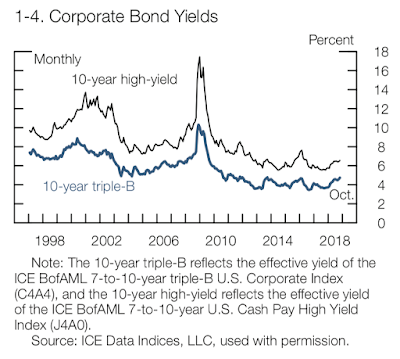
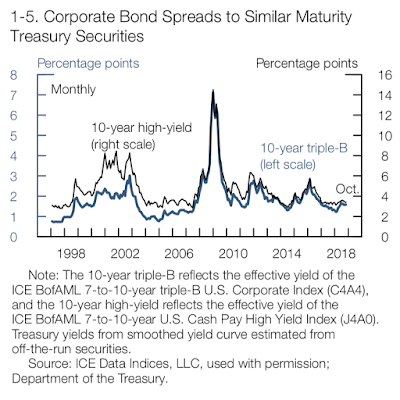
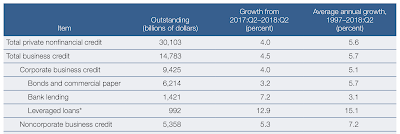
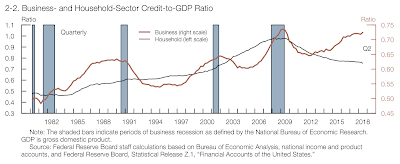
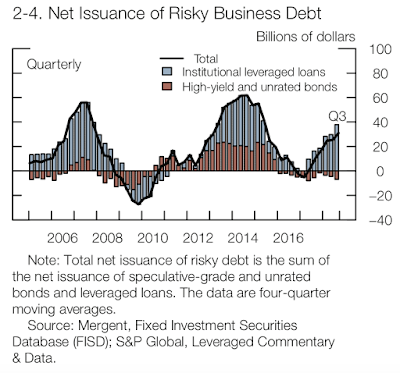
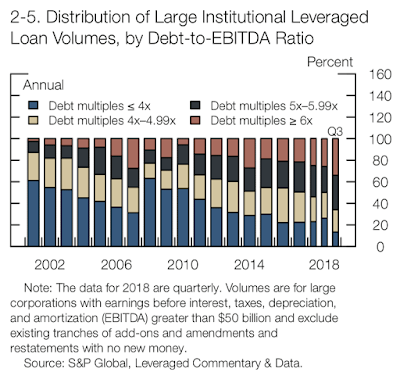
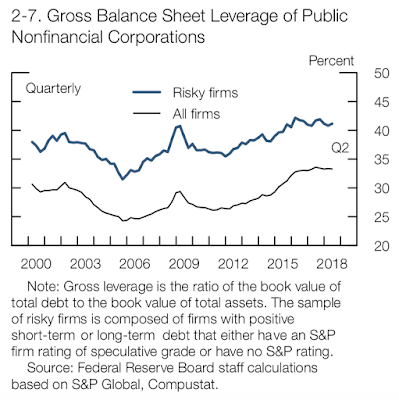
Be the first to comment